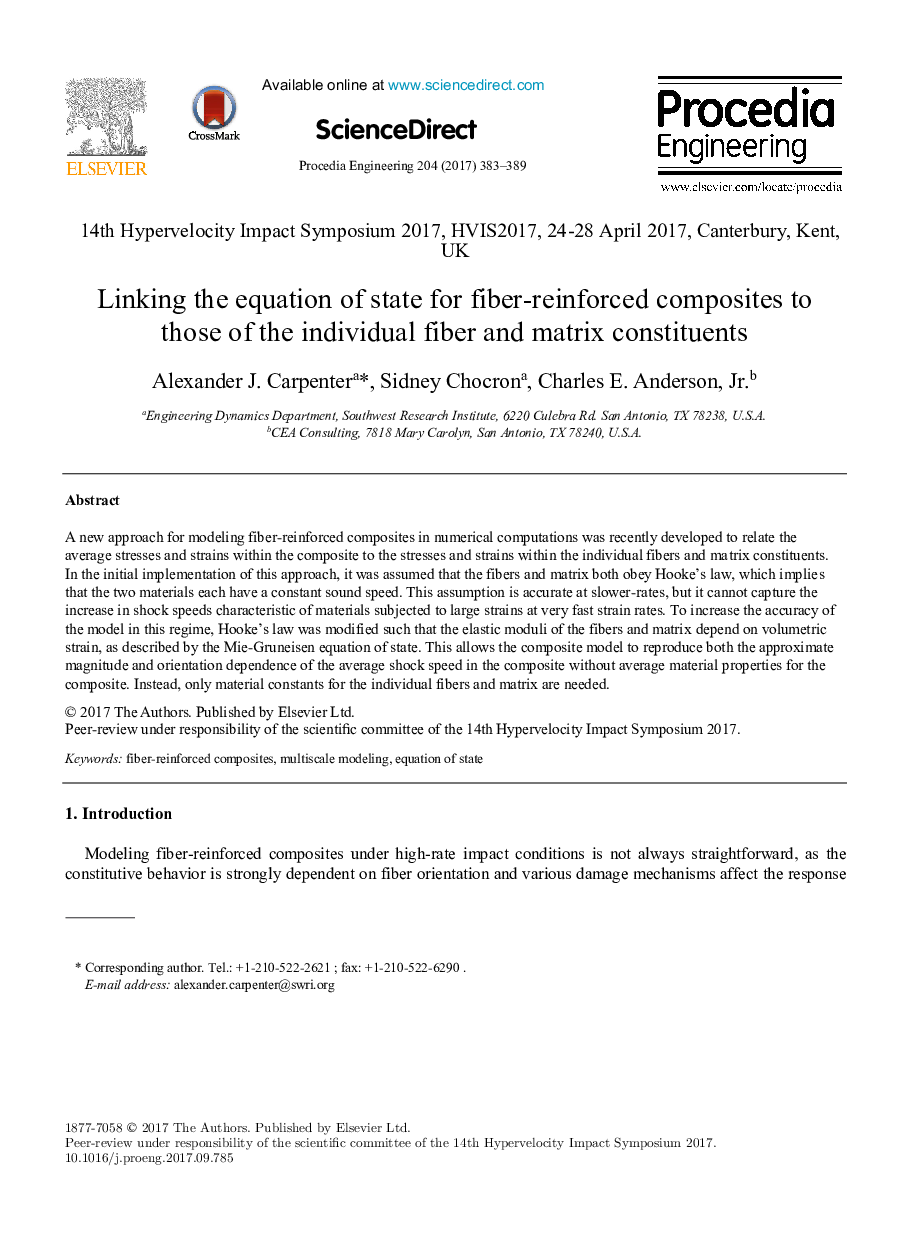| Article ID | Journal | Published Year | Pages | File Type |
|---|---|---|---|---|
| 7227989 | Procedia Engineering | 2017 | 7 Pages |
Abstract
A new approach for modeling fiber-reinforced composites in numerical computations was recently developed to relate the average stresses and strains within the composite to the stresses and strains within the individual fibers and matrix constituents. In the initial implementation of this approach, it was assumed that the fibers and matrix both obey Hooke's law, which implies that the two materials each have a constant sound speed. This assumption is accurate at slower-rates, but it cannot capture the increase in shock speeds characteristic of materials subjected to large strains at very fast strain rates. To increase the accuracy of the model in this regime, Hooke's law was modified such that the elastic moduli of the fibers and matrix depend on volumetric strain, as described by the Mie-Gruneisen equation of state. This allows the composite model to reproduce both the approximate magnitude and orientation dependence of the average shock speed in the composite without average material properties for the composite. Instead, only material constants for the individual fibers and matrix are needed.
Related Topics
Physical Sciences and Engineering
Engineering
Engineering (General)
Authors
Alexander J. Carpenter, Sidney Chocron, Charles E. Jr.,
